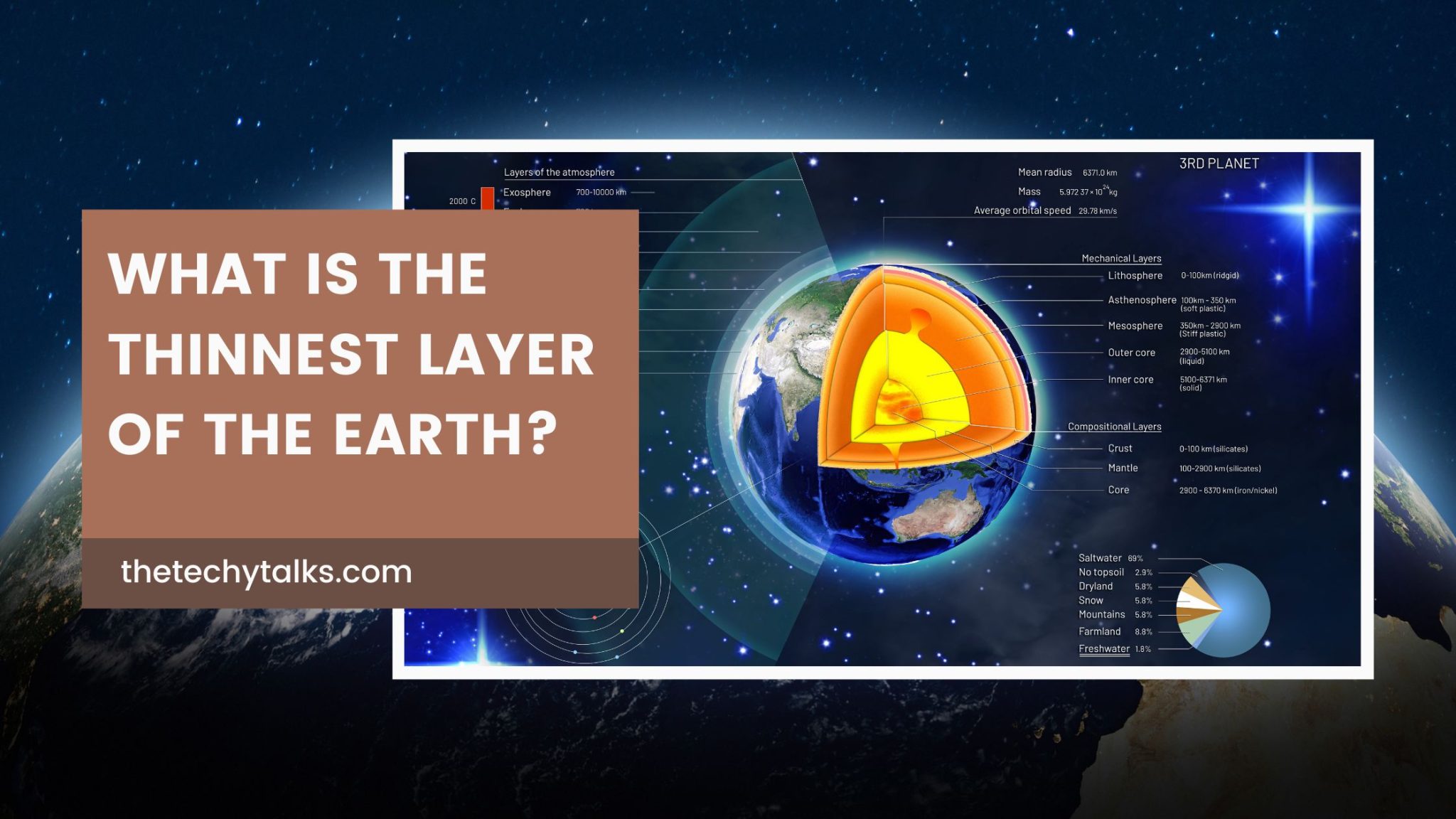
What is the thinnest layer of the Earth?

There are a total of thinnest 4 layers of the planet Earth. The layers are
- The solid crust which is on the outside.
- The mantle
- The outer core
- The inner core
The solid crust of is the thinnest of layer of the Earth, making up less than 1% of the total volume of our planet. The structure of the earth can be classified in 2 ways-
- Based on Chemistry
- Based on Mechanical Properties.
The main focus of the article is to highlight how and why the crust really is thinnest layer of the Earth. In depth, the crust, thinnest layer of the Earth ranges from 3-4 miles or 5-70 kilometres and is the outermost layer of the Earth. The oceanic crusts are the thinnest parts whereas continental crusts are the thickest parts. In addition to being thinner, oceanic crust is also denser than continental crust. Since scientists have discovered some rocks that are much older than the majority of rocks at the Earth's surface, we know that Earth had a solid crust for at least 4.4 billion years. Most rocks at the Earth's surface are relatively young (less than 100 million years old, compared to the Earth's age, which is roughly 4.4 billion years).
What is the thinnest and coldest layer of the earth?
You can compare the crust, the thinnest layer of the Earth to the peel of an apple because it is typically only 40 km thick, much thinner than the mantle, outer core, and inner core. It would actually be considerably thinner if scaled. This crust was created by igneous processes, which explains why it has a far higher number of incompatible elements than the mantle. In contrast to the mantle, for example, the crust interacts with the atmosphere and hydrosphere in addition to the other layers of the Earth, making it vulnerable to processes like erosion and weathering.
The oceanic crust is located at the bottom of the oceans and some seas. The oceanic crust is made up of solid, frequently dark (referred to as "mafic") rocks like basalt and gabbro, and is normally relatively thin (less than 10 km). The continental crust is thicker than that; it typically extends up to 70 km beneath the surface. Other names for the two crustal kinds include granitic (continental) and basaltic. (oceanic). The crust, thinnest layer of the Earth is divided into fifteen tectonic plates that are all moving relative to one another, rather than being one continuous, hard layer.
Read also: slowest growing plant on earth
Conclusion:
The fact cannot be denied that crust is its thinnest layer of the Earth. The crust, mantle, and core are the three principal layers that make up the earth. The topmost layer is crust. It is exceedingly thin, making it easy to compare to an apple's skin. Less than 1% of the earth's volume is made up of the crust. It mostly consists of silicon and aluminium. Depending on the geography, the thickness of the crust may change. It has more incompatible elements because it was formed by igneous processes.






















